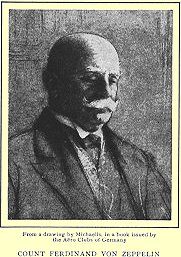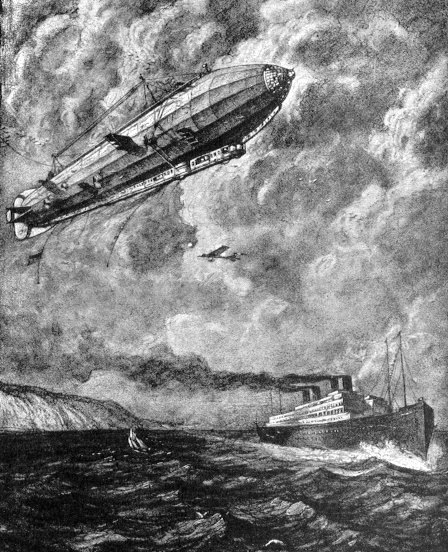Zeppelin in Minnesota
Today, see if you can guess our mystery inventor. The University of Houston's College of Engineering presents this series about the machines that make our civilization run, and the people whose ingenuity created them.
A twenty-five-year-old cavalry officer came to America from Germany in 1863 as a foreign observer of the Union Army. He was a Prussian nobleman, and when I say his name, you'll all recognize it. But first, I want to tell you about his adventure here.
He narrowly escaped capture by Lee's Army in Virginia. He watched draft riots in New York. He flirted with young ladies on a Great Lakes boat from Cleveland, Ohio, to Superior, Wisconsin. He ate muskrat and hunted with Indians. His long odyssey eventually brought him to the International Hotel in St. Paul, Minnesota.
Just across the street from his hotel, a balloonist named John Steiner was offering rides in his observation balloon. Steiner had flown for the Union Army as a civilian observer. Steiner's work probably saved McClellan's Army from defeat in 1862. But he'd quit the Army in a dispute over pay and gone barnstorming.
Our German officer decided to add a balloon ride to his American adventure. Steiner sent him up on a solo flight at the end of a seven-hundred-foot tether rope. The young man wrote a formal letter-report about the experience. Outwardly it was straightforward reporting of the military potential of observation balloons. But between the lines bubbled a barely controlled excitement.
He returned to Germany in 1870, while his Minnesota experience festered. Finally, in 1891, he retired as a brigadier general and devoted himself to lighter-than-air flight. He tried, without success, to interest the German army in its potential.
 By then, many people had built rigid navigable balloons -- or dirigibles. The French experimenter Giffard had flown the first successful one in Paris, eleven years before that balloon ride in St Paul. But no one had yet made a commercially viable dirigible.
By then, many people had built rigid navigable balloons -- or dirigibles. The French experimenter Giffard had flown the first successful one in Paris, eleven years before that balloon ride in St Paul. But no one had yet made a commercially viable dirigible.
But the name of our German officer was Count Ferdinand von Zeppelin. And Zeppelin took up dirigible-building just after his sixtieth birthday. He flew his first airship in 1900.
Zeppelin managed to synthesize all the elements other inventors had been identifying down through the nineteenth century. He lived and worked another fourteen years, creating the grandest machines in the air. The spectacular Zeppelin airships continued to dazzle the world until the whole technology went up in flames with the Hindenburg at Lakehurst, New Jersey, in 1937.
And we're left with the astounding fact that the seed for all this European high technology had been sown in Western America just after the Civil War. Shortly before he died, Zeppelin wrote,
While I was above St. Paul I had my first idea of aerial navigation strongly impressed on me and it was there that [the idea of] my Zeppelins came to me.
Perhaps Zeppelin was so successful just because he was fulfilling a dream as atavistic as Daedalus and Icarus. Those great graceful whales in the sky had literally gestated throughout Zeppelin's entire adult life.
I'm John Lienhard, at the University of Houston, where we're interested in the way inventive minds work.
(Theme music)
Crouch, T.D., The Eagle Aloft: Two Centuries of the Balloon in America. Washington, D.C.: Smithsonian Institution Press, 1983.
See the Wikipedia article on Zeppelin
This site includes an image of Zeppelin's first dirigible patent.
This is a considerably reworked version of Episode 184.

An artist for the 1910 Century Magazine imagines Zeppelin travel in 1915